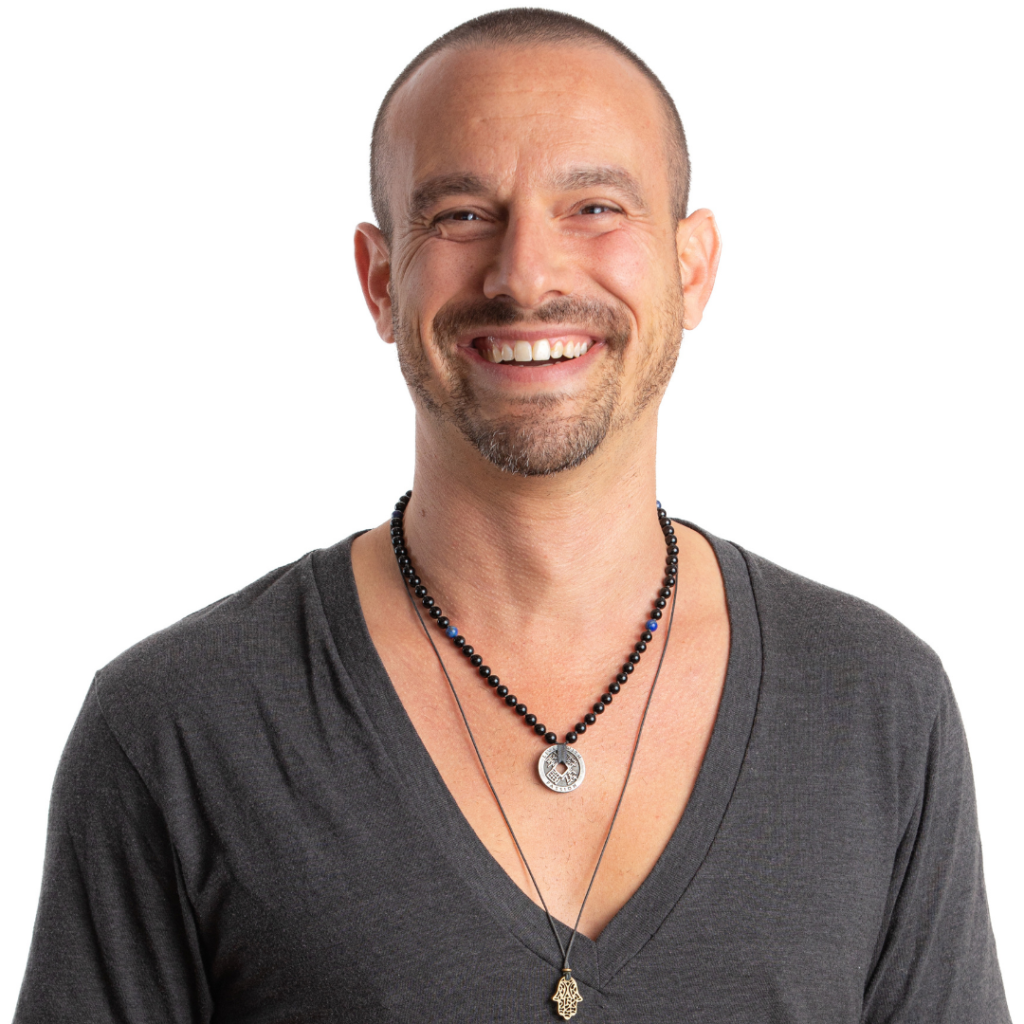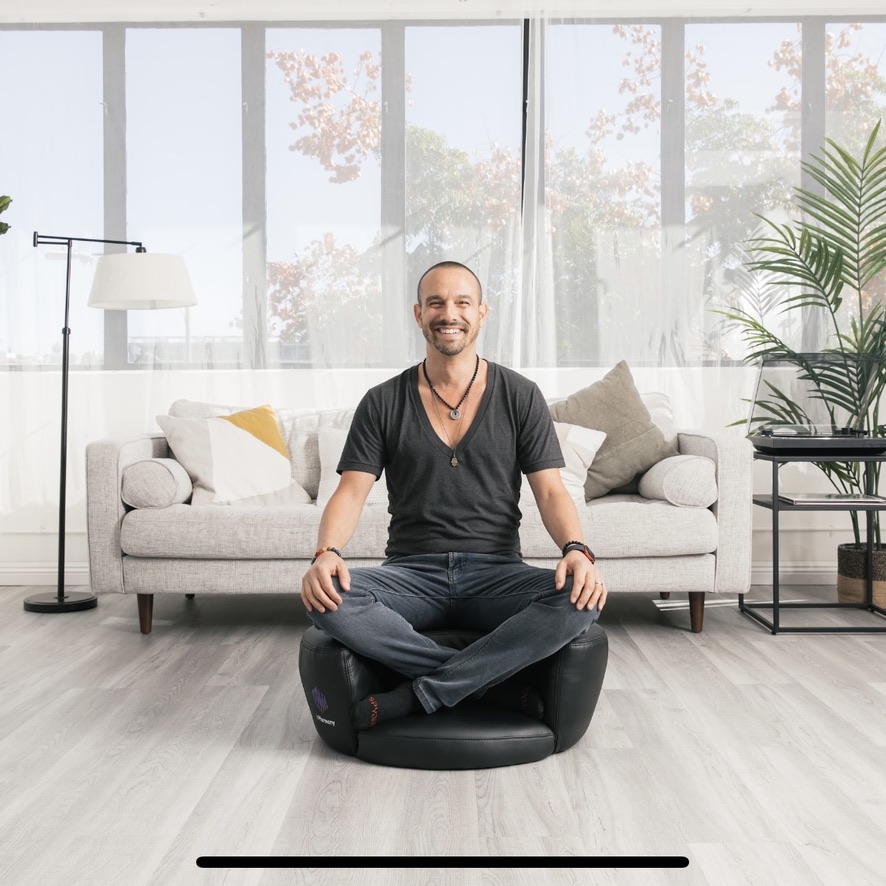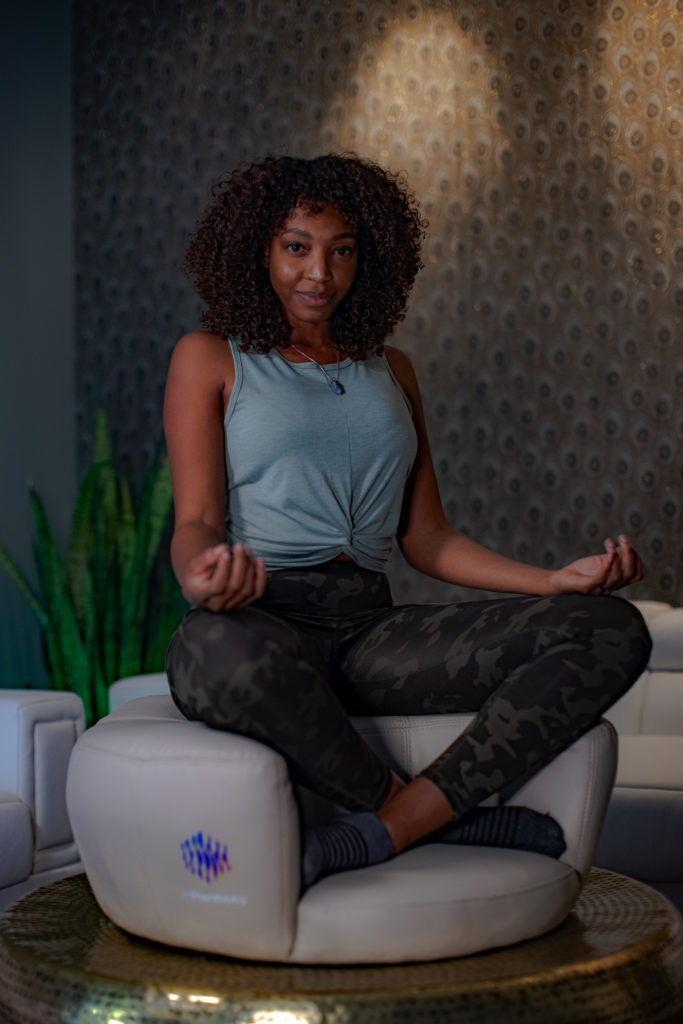Meditation is a practice as old as time, but has recently become a growing trend on social media. And fans from all over the world praising its benefits.
And who can blame them? There are SO many advantages to meditating.
Studies have shown that regular meditation can reduce stress and anxiety. It can also increase focus and concentration, boost the immune system, improve emotional balance and reduce pain.
Meditation can also be beneficial for mental health. It can help to alleviate symptoms of depression and anxiety, as well as improve overall mental clarity and focus. It can also lead to inner peace and greater self-awareness.
Even better, companies like inHarmony add even MORE value to meditating. For example, the company uses their patented technology of sound and vibration therapies to help you quickly reach a deep meditative state. Incorporating Vibro-Tactile Stimulation and Vibro-Acoustic Technology, the revolutionary company guarantees fast and effective relaxation.
Introducing the inHarmony Meditation Cushion
inHarmony also debuted their Meditation Cushion as “a shortcut to meditate deeper, faster, and longer.” But not only does it boast an immersive music experience, you can also receive expert insights from professionals on how to maximize your Cushion using meditations, chantings, breathwork, and educational talks. And judging by its long list of rave reviews, it’s probably safe to say that it really does work.
Even better, certified vibroacoustic therapy practitioner and co-founder of inHarmony Interactive, Craig Goldberg chatted with 21Ninety to explain just how it all works. Take a look:

Brittni Williams: Concerns are growing surrounding mental health in America. As a therapy practitioner, how have you noticed this shift in mental health in your practice?
Craig Goldberg: The last three years have been anything but smooth and easy in the mental health arena. I think regardless of how you feel about just about anything that has gone down — whether it’s political, whether it’s medical — there is a huge challenge that people are having on either side of the coin wherever you fall.
So yeah, a lot of people are going through a lot from a mental health perspective, and not realizing exactly what’s happening in their body and their mind. I think that the biggest challenge is the unknown. And we’ve certainly seen an uptick with our technology as it pertains to mental health because we help to reset the nervous system.
A lot of people are walking around triggered in a sympathetic nervous system response all day long — sympathetic nervous system response being associated with stress and anxiety, parasympathetic being associated with calm and relaxed. And our technology, vibroacoustic therapy in particular, helps to reset the nervous system. In as little as 15 minutes, it begins the chemical cascades associated with bringing you back to calm and relaxed.
So, yeah, it’s been a beautiful journey for us to be able to have this impact on so many different aspects of mental health. Because once you reset the nervous system into a parasympathetic nervous system response, that calm and relaxed feeling that person is experiencing allows them to rationally handle the day-to-day trials and tribulations and we can certainly talk a little bit more about that too.
Vibroacoustic Therapy
BW: You touched on vibroacoustic therapy. Could you explain what exactly it is and how it helps?
CG: Vibroacoustic therapy, or V.A.T. — vibro is vibration, acoustic is sound — is vibration and sound therapy. The body of research goes back just over 40 years to the late 1970s. It was originally termed by a gentleman by the name of Olav Skille. And it specifically talks about the research specific frequencies and their impact on our physiology, our anatomy, and our neurology. So how does sound and frequency influence our body, mind and spirit?
BW: What prompted you to create the Meditation Cushion?
CG: A few different things, actually. The first and foremost was adoptability. We wanted more people to have access to it. And a less expensive offering would obviously increase adoptability and expand the market, right? Not everybody can invest in a $3,400, or $3,500, or $5,500 piece of technology. So we wanted something that was a smaller footprint that still had the same impact.

The Meditation Cushion began to develop more specifically even because it’s one thing to develop a less expensive piece of hardware. It’s another thing to have a particular form factor and a specific intention behind it. And mindfulness and meditation is a big part of what we do. So for the last six plus years, we’ve been making vibroacoustic technology. And what we’ve noticed through various studies that we’ve done, and studies that have been done around the technology and the field of research, is that we have a tremendous impact on the mind and on the mind-body connection. Listening to music in a manner in which we deliver it through a sound lounge practitioner or meditation cushion brings the mind into a harmonized state, typically in an alpha or theta brainwave state. And these are also the target brainwave states for mindfulness and meditation.

So all of a sudden, we started to wrap everything together, only to find that a Meditation Cushion made a lot of sense because we were helping people to reach deeper meditative states using our inHarmony practitioner and are inHarmony sound lounge before we even came out with the Meditation Cushion, which just made an awful lot more sense for us to wrap all of this together and start to serve a market that we were already serving, and one that we could do a lot broader and with a lot more specific intention around what our tech does and the influence it has on our physiology.
What is the Meditation Cushion?
BW: Can you explain how the Meditation Cushion works? What exactly is it? How is it to be used?
CG: Absolutely. The Meditation Cushion is a seat and there are several different ways that you can sit on it. We chose cushion after lots of very heated debate at some time. It’s not a chair, we decided that a chair has legs and an arm. And that a cushion is something that sits on the floor that you sit on, which is how we got to the “inHarmony Meditation Cushion” as a name.

It’s also particular in that space, right? Meditation Cushions are something that you sit on like a zafu, or something to that effect, or simply has vibro acoustic therapy built in because that’s what we do. And we’re focused on utilizing tactile transducers, which is a fancy word for half of a speaker — not exactly, but close enough. This technology embedded inside our inHarmony Meditation Cushion is what delivers sound and frequency directly to the body — something that’s very unique to us. And something that is very important to us is that your entire body and physiology is in that vibratory expression, and having that same vibratory experience. So having your feet folded into the foot well, against different inflection points on the Cushion itself helps to complete the entire lower half of your body being in that vibratory experience at the same time.
So yes, you are sitting on the Meditation Cushion. You could also sit in the footwell. You can also lay down, extended out in front of it with your head in the footwell. There are a number of different ways that you can sit however, the way that it was designed is to sit on it. The tactile transducers at your root, vibrating straight up your spine. And we have built-in speakers in the footwells as well. But it is designed for you to sit on it and enjoy vibrational therapy throughout your entire body and to have either headphones plugged in or using the built-in stereo speakers to hear the rest of those frequencies and create that immersive experience.
BW: And would you say that it’s beginner-friendly? Can people who are new to meditation benefit from it? Or is it moreso targeted towards those who are already familiar with meditation or at a more advanced level?
CG: Yes, is the answer. We have folks that we work with who have been meditating for 20+ years, 20 minutes per day that buy our technology. And we get messages and testimonials from them that’s something along the lines of ‘Wow, I had no idea I wasn’t getting as far or as deep as I could get the past 20 years.’
Sound and vibration is very specific in guiding your body to that deep meditative state. So you don’t have to think about it and you don’t have to focus your time and energy. You simply need to lose yourself in the music; the body and the mind knows exactly where to go, it’s guided to get there by the music. So you’re taken to that deep meditative state almost automatically.
So we really serve that market well, because we’re teaching somebody who has a deep meditative practice and a regular, long-lasting meditative practice and we’re taking them to that deeper place. Now all of a sudden, without the cushion, they can go deeper, and they can get to that place because they already have the roadmap of how to get there.

We also serve a community that’s much like myself, which I would consider myself as somebody who could not meditate. I could not turn off my monkey mind. I could not turn off the thought patterns associated with my to-do list and all of the other things I could and probably should be doing other than sitting down quietly, quote, unquote, trying to meditate. And for that market, myself included, it’s why we design the technology.
We serve this market beautifully, because all you have to do is sit down and listen to the music, lose yourself in the music, and your body, mind, and spirit is guided into that deep meditative state. So we really serve both sides of the market, from somebody who’s been meditating for a long time. And somebody who has tried and can’t or hasn’t tried and wants to. A lot of the feedback that we get is from those two main groups in particular.
BW: You mentioned listening to music with the Meditation Cushion. Where can customers find this music? Is it on an app or is it on the inHarmony website?
CG: We do have an app called inHarmony: Music Meditations. You can find it in the Google Play Store as well as iOS App Store.
It is specifically designed for iOS, which is different from iPad OS and different from iPod OS. Although it will run on both, it’s originally designed for iOS and the iPhone. It runs beautifully on Android tablets and computers. Or if you have an M1 chip in your MacBook, you can also run our app.

And inside our app, you’ll find 220 tracks specifically designed for the inHarmony Meditation Cushion. When you buy our Meditation Cushion it’s offered to you at a one-time lifetime access of $199 at checkout, or you can purchase it and subscribe through the app store for $7.99 per month or $79.99 per year.
Inside, you’ll get new tracks as they’re released and as they’re rolled out. You will also get all the updates. And again, once you’re a subscriber — whether it’s monthly, annually or lifetime — you get all the updates.
And we have a Director of Harmonics. His name is Anthony Weiss. He’s an incredibly talented musician and sound healer for the last 23 years. And he is the one that really guides and creates and curates all of the music that you’ll find in there. It’s quite beautiful what we’ve amassed in the collection, in the catalogue that we’ve pulled together. And we’re really just scratching the surface. Anthony’s will be working with us full-time by the time this article is printed. And we will be very much dedicated to creating new music almost every week.
As of right now we’re releasing two new tracks per month and we are soon to release a lot more music focused specifically on the therapeutic impact of our technology and activating our technology the way that it was originally designed. You can listen to anything you want through our technology.
One of the beautiful parts of our tech is that you can stream anything from YouTube, Pandora, Spotify, something that’s already on your phone, — anything that you can connect or play through the phone that’s connected to our Cushion, you can listen to through our tech. You just need to keep in mind that not everything is going to have a low enough frequency response to drive the transducers or drive them specifically to the therapeutic impact. Think of a bass guitar versus a kick drum. The bass guitar is going to be way more therapeutic with this long pulled out drone bass note compared to a fast hitting kick drum. It’s really designed for the former not the latter.
BW: Really cool. Sounds like this is an all-in-one Meditation Cushion. What are your tips or tricks for getting the most out of the Cushion?
CG: Regular usage is probably the most profound and the most important. Everybody’s different, everybody’s mind is different. And we, as a manufacturer and as composers and content creators, need to meet you where you are. And that’s going to be different for everybody. So my best suggestion for getting the most out of our technology is to use it, to play with it, to experience it, keep it running, explore the app, explore the different tracks and how they feel to you.
The cool part about our music — and this is both from my own findings, as well as our community — is that, let’s say you take one of our tracks, [track] 174, which is My Body is Aligned. And if you listen to that track tonight on the Meditation Cushion, and you listen to it again tomorrow morning on the Meditation Cushion, you’re going to have two different experiences for two reasons.
First of all, something has happened between tonight and tomorrow morning and you are a slightly different person than you were last night.
And the other thing is, with each session that you do, think of it like you’re peeling back an onion to get a deeper and deeper experience. So you will have peeled back more layers of the onion the following morning. And you will have done a certain amount of work while you rested the night before based on the previous session.
So I share this with people because even as I’m listening to our chakra tracks that we have that are specifically focused on sacral and root and throat; even as I’m listening to these tracks and different chakras are coming into different alignment, different energy centers are opening and closing in my body for various reasons, I’m having a different experience with each session even off the same track. So my best advice to get the most out of it is to develop a routine and regular practice, and then expand from that and try it in different situations.
We have entrepreneurs that use our technology to break in between strategy session and operational work. Serial entrepreneurs that use our technology to discern from one company to another, from one mindset to another, from creative work to task work. Artists that use our tech to get inspired prior to going into draw. We have elite athletes that use our tech for recovery. We have elite athletes that use our tech to get in the zone prior to a workout. So there are so many different applications for this technology. And I welcome you to reach out if you ever have any questions around your specific condition or a specific application. I’m always available to connect to share, to teach, train, educate, learn, and give feedback on potential applications of our tech.
BW: Great. And what about kids? Is this something that children can also use?
CG: Absolutely. I have a two-and-a-half year old daughter who loves the tech. At the end of the day, you’re listening to music. So is it safe for your kids to listen to music? Absolutely.
There are a few contraindications that I’d be cautious of. For example, if you have an open wound, you want to let that wound close before you shake every cell in your body because that can cause the wound to open up.
Also, if you’re in any type of high risk category, you’re going to want to talk with your doctor, you’re going to want to talk with your medical team, you’re going to want to understand if this is something that’s good for you.
And I would also say that if you do fall into any of those high risk categories, or if you have any questions yourself, — and again, you asked about children — if mom and dad are cautious around their child’s condition, or how they’re going to react to it, start low. Low volume, low vibration, and ease into each sequential session. After that, you can increase the vibration and increase the experience. It is possible for a technology to trigger a detox sensation so you’re now shaking every cell in your body. That can increase lymphatic drainage, it can increase detoxification through the body, and you can present detox symptoms. So you just want to be cautious around the technology. It is very powerful, even though it’s very basic in what it is, so you want to ease into it with each sequential session.
